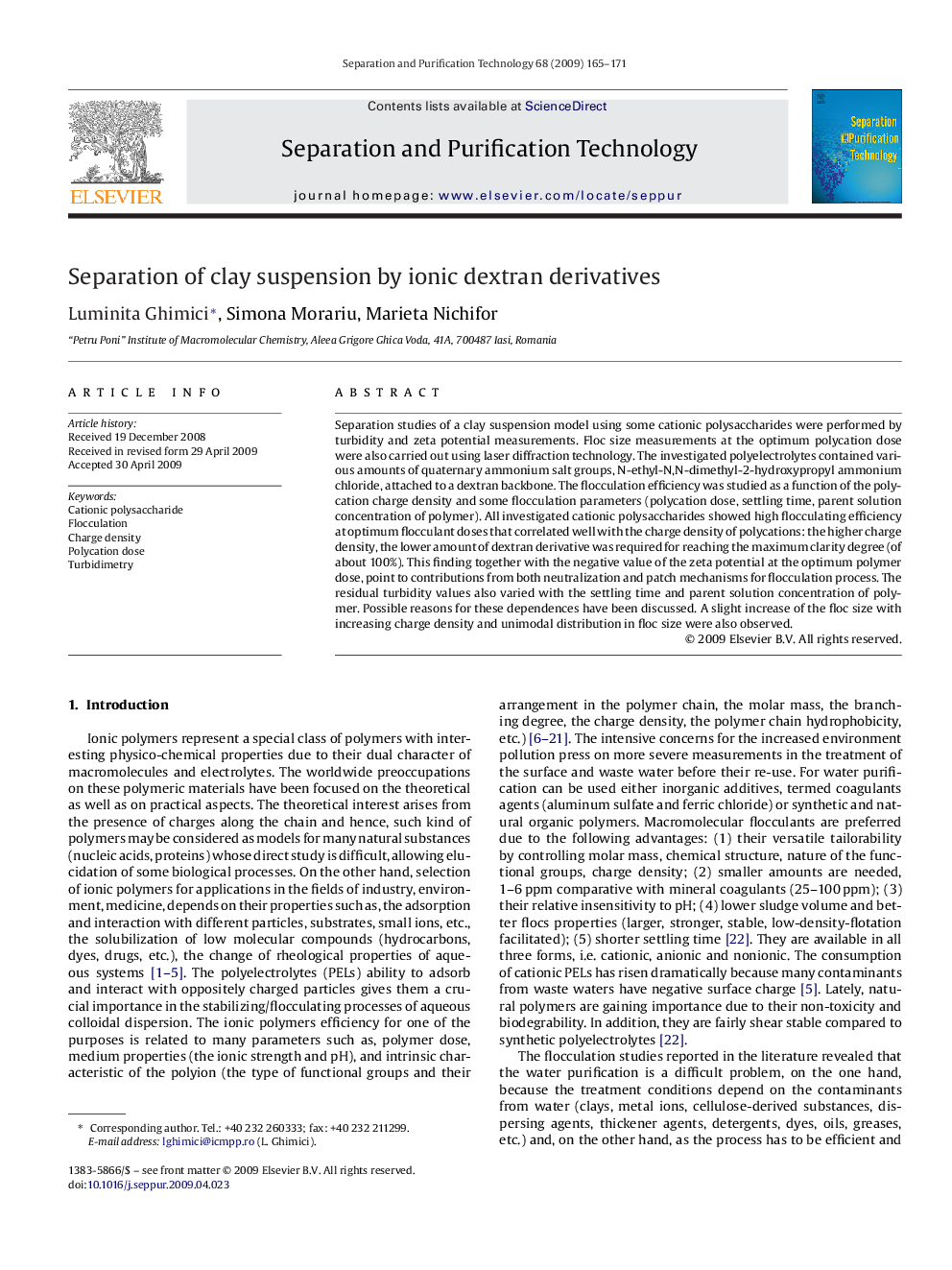| Article ID | Journal | Published Year | Pages | File Type |
|---|---|---|---|---|
| 642976 | Separation and Purification Technology | 2009 | 7 Pages |
Separation studies of a clay suspension model using some cationic polysaccharides were performed by turbidity and zeta potential measurements. Floc size measurements at the optimum polycation dose were also carried out using laser diffraction technology. The investigated polyelectrolytes contained various amounts of quaternary ammonium salt groups, N-ethyl-N,N-dimethyl-2-hydroxypropyl ammonium chloride, attached to a dextran backbone. The flocculation efficiency was studied as a function of the polycation charge density and some flocculation parameters (polycation dose, settling time, parent solution concentration of polymer). All investigated cationic polysaccharides showed high flocculating efficiency at optimum flocculant doses that correlated well with the charge density of polycations: the higher charge density, the lower amount of dextran derivative was required for reaching the maximum clarity degree (of about 100%). This finding together with the negative value of the zeta potential at the optimum polymer dose, point to contributions from both neutralization and patch mechanisms for flocculation process. The residual turbidity values also varied with the settling time and parent solution concentration of polymer. Possible reasons for these dependences have been discussed. A slight increase of the floc size with increasing charge density and unimodal distribution in floc size were also observed.
